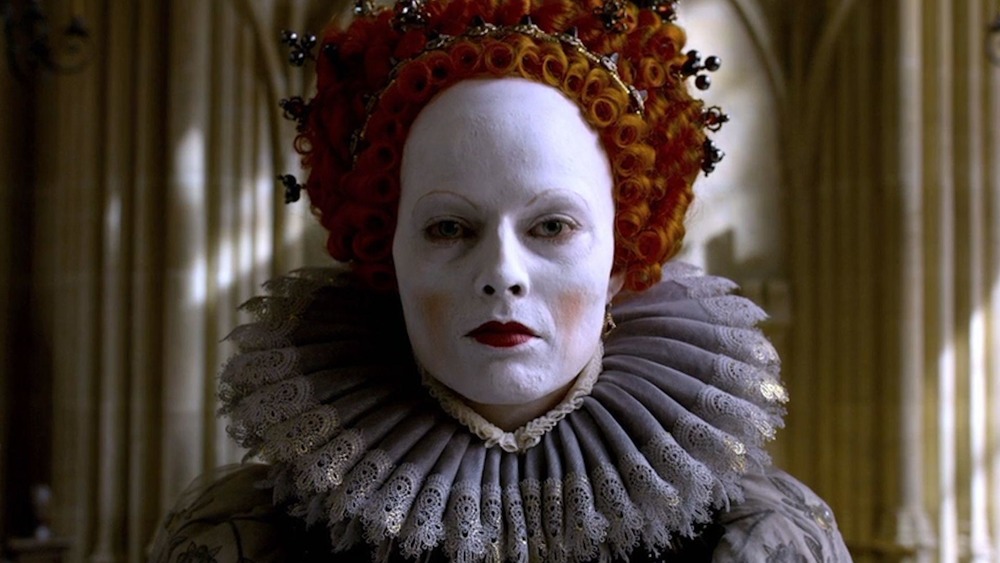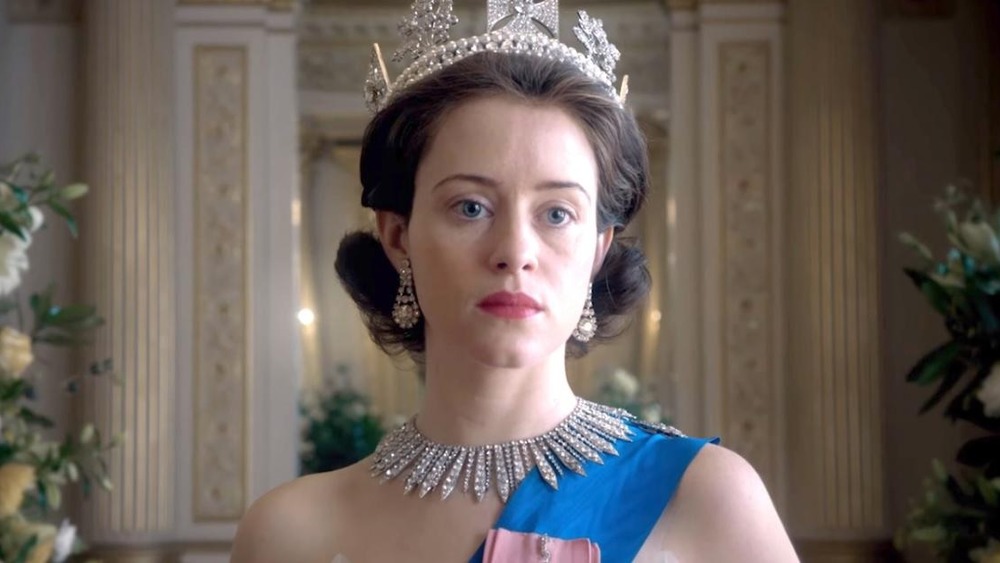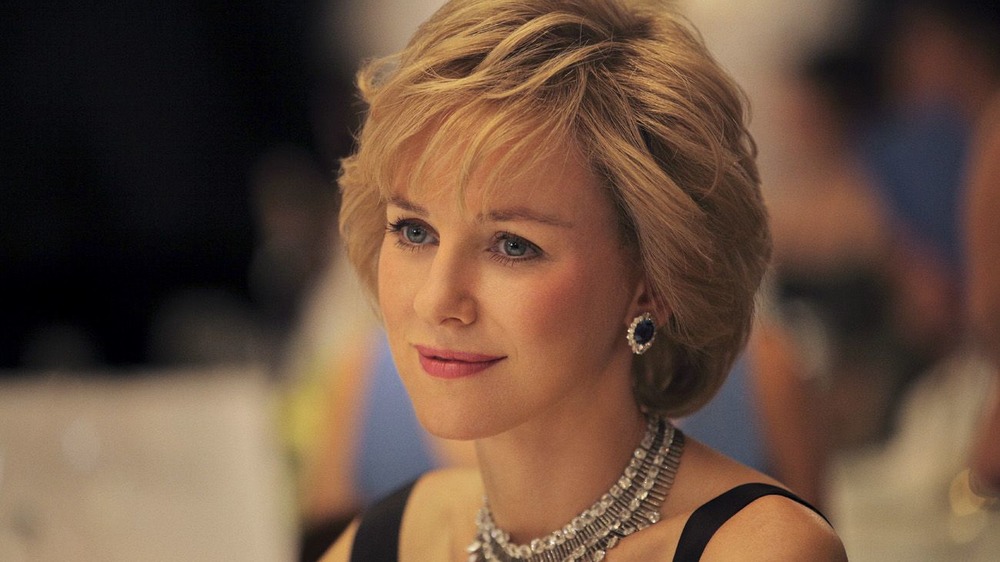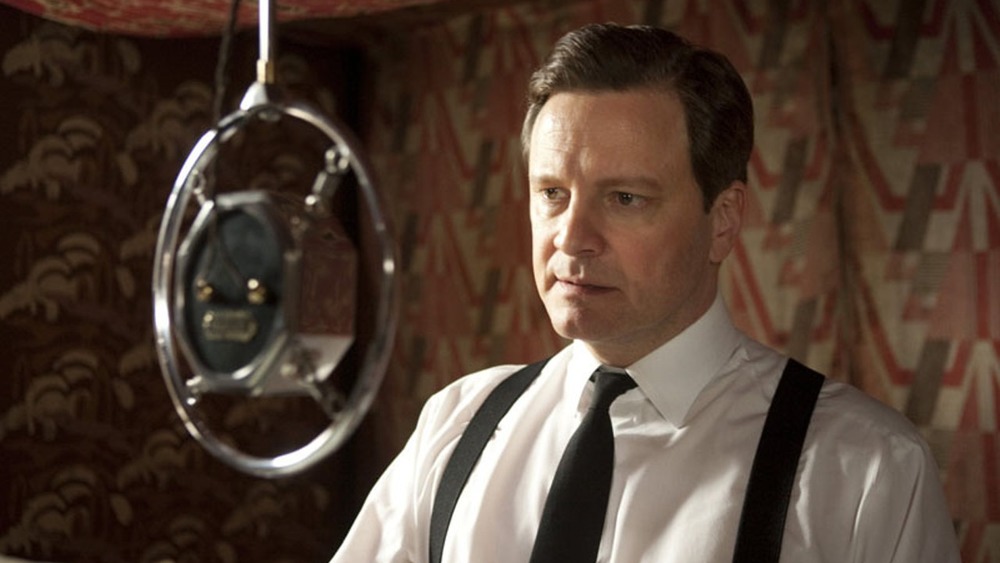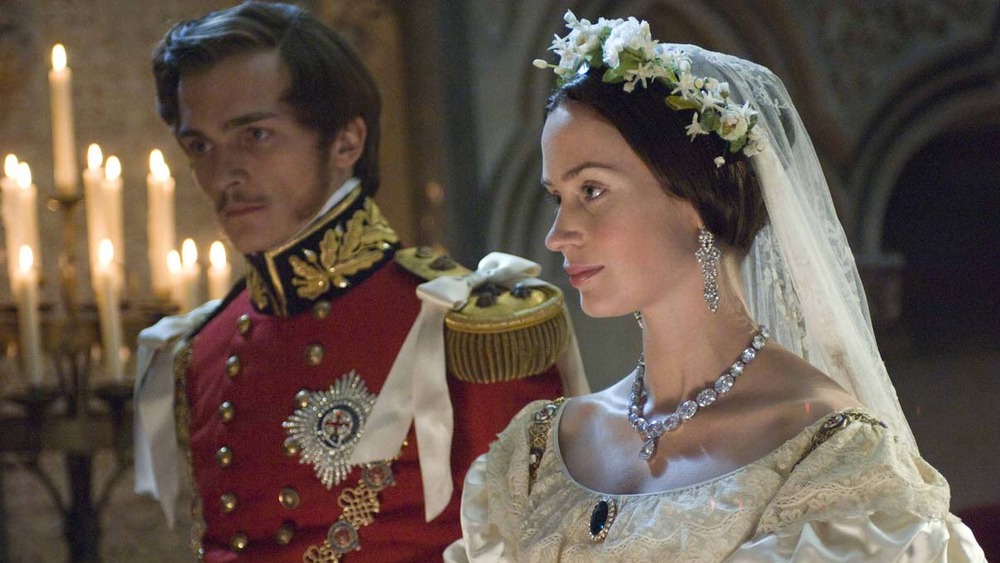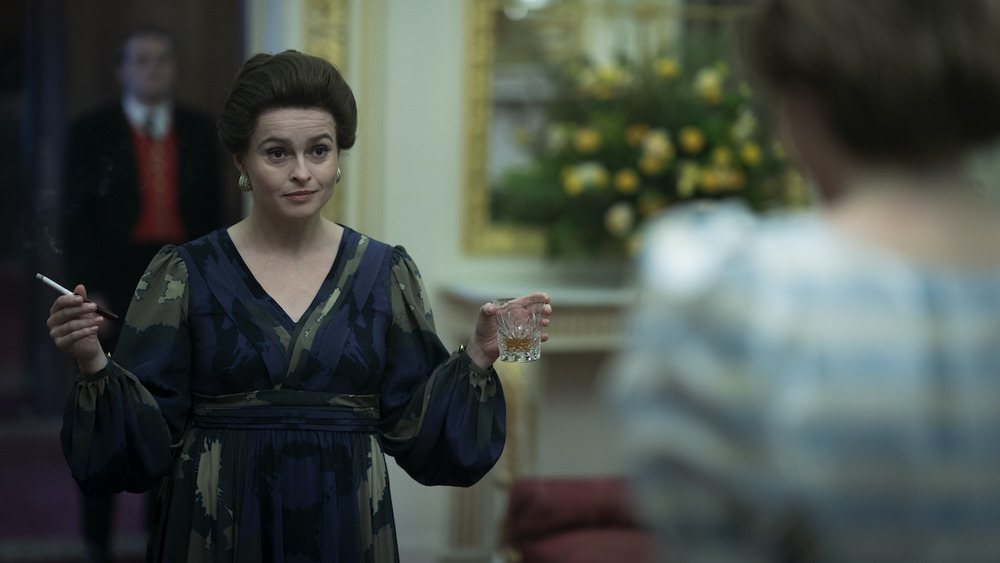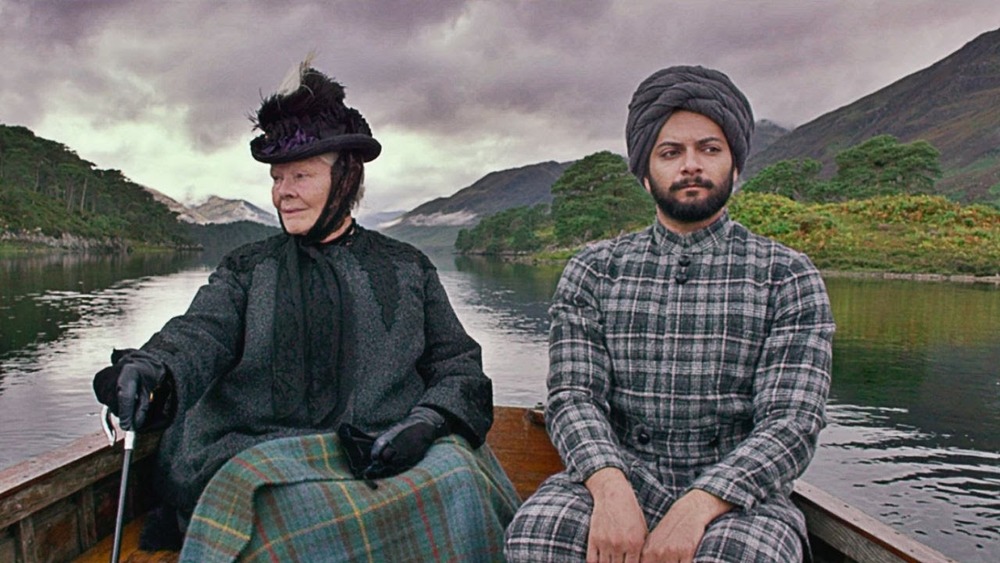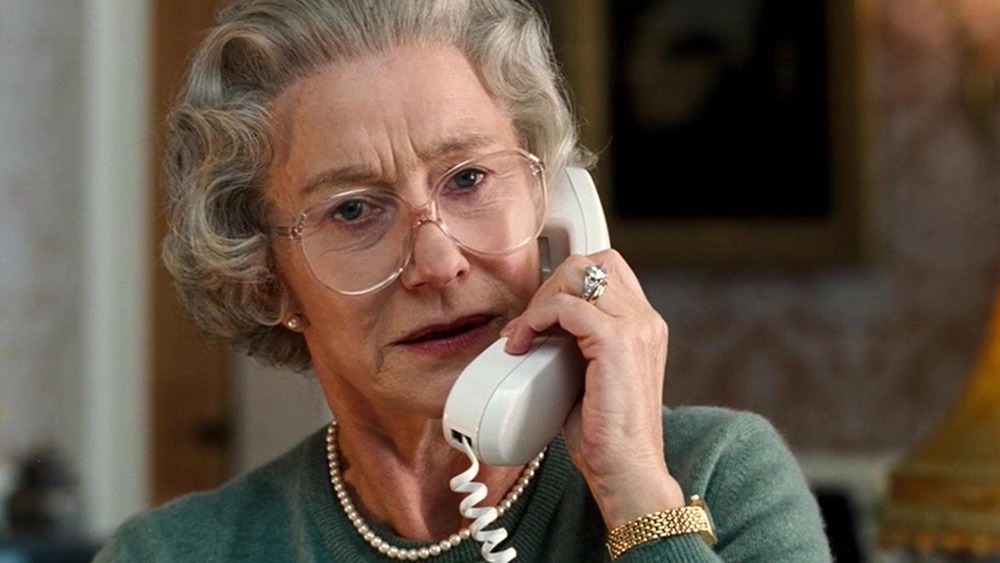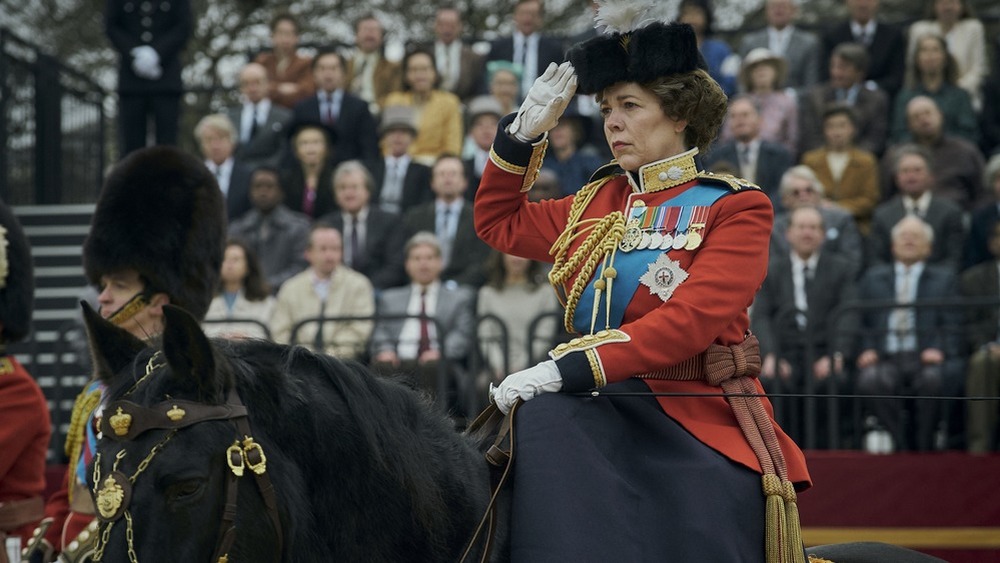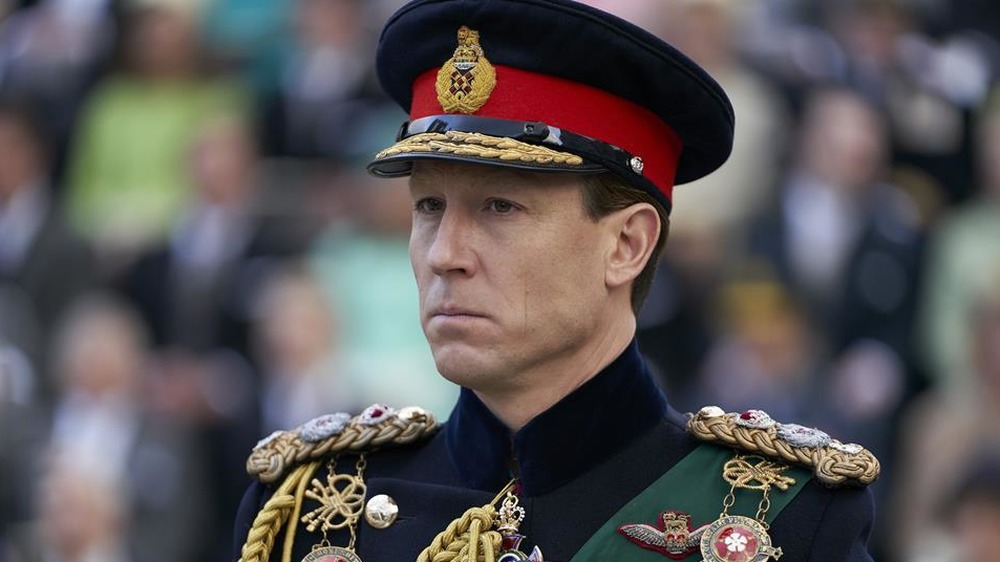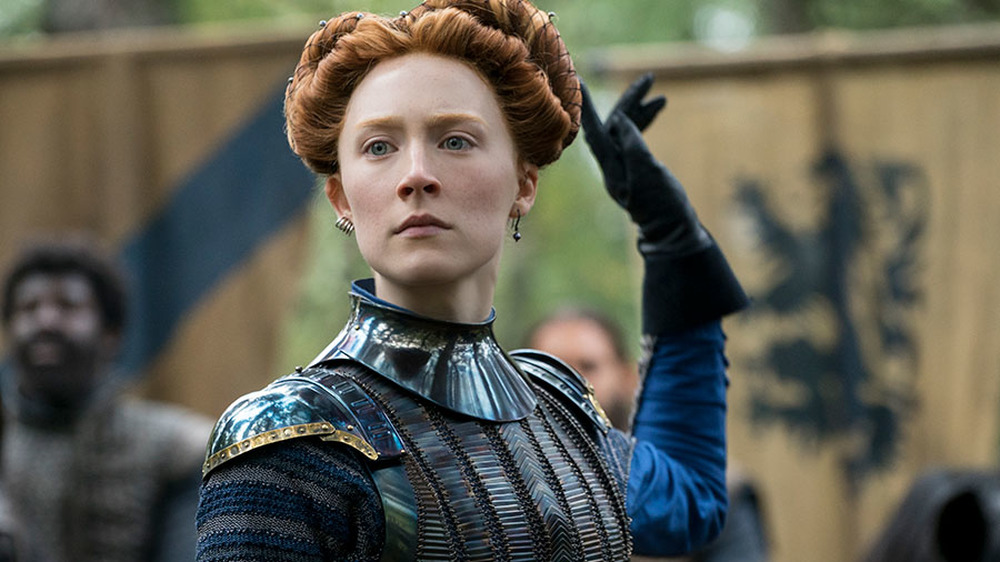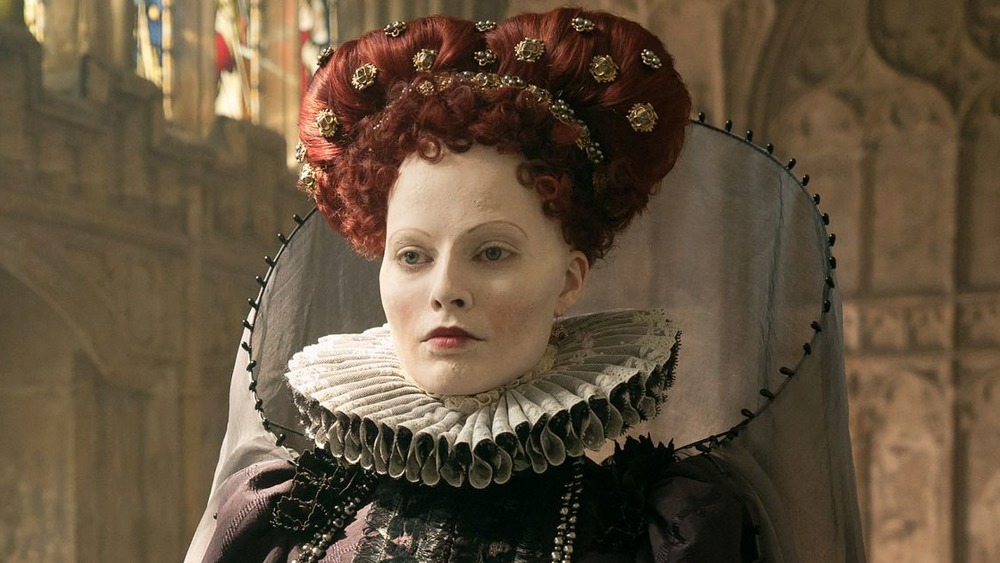This Is How Actors Prepare To Play Royals
Portraying any real person can be a nerve-racking experience for an actor, but the stakes are just that little bit higher when you're playing a royal. Thespians have been stepping into the bejeweled shoes of British monarchs since the days of William Shakespeare, whose depictions of royalty have informed popular culture for centuries. Richard III is known as a treacherous, deformed murderer thanks to the famous bard, though historians agree that Shakespeare took artistic liberties when it came to royals, a practice that today's storytellers continue to indulge in.
There's plenty to be gleaned from historical records, but because members of the royal family have always gone out of their way to keep the intimate details of their lives private, filmmakers have had to fill in the gaps when adapting their stories. This has been both a blessing and a curse for the many actors who have been charged with bringing royals to life over the years, some of whom have gone down some pretty unusual routes in their preparation. This is how actors get ready to play royals.
Claire Foy revelled in her Queen Elizabeth II research
The current and longest-serving British monarch, Queen Elizabeth II, has steered the royal family through decades of ups and downs, working with over a dozen prime ministers during her unparalleled reign. Writer Peter Morgan set out to create a drama about the veteran queen and her family with The Crown, which begins with Elizabeth's marriage to Prince Philip in 1947. Claire Foy (who was visibly pregnant when she auditioned for the hit Netflix show) was chosen to portray the monarch in her younger years, and she immediately started consuming all things Queen Elizabeth II.
"When I found out I got the job, I was reading the whole time and watching stuff," Foy told Vogue. "I always like to do quite a lot of homework; I quite like to do the research. If I didn't do this, I think I would like to be a researcher." There's a lot to unpack when it comes to the queen, however, which is why Netflix hired a bunch of royal experts to assist the actors. "They wanted to get it right, so they had a massive research team," Foy revealed. "And we had rehearsals, so we had a long time where we just sat down and people spoke to us. We were given research materials."
The Crown wasn't Foy's first time playing a royal — the English star portrayed Henry VIII's second wife Anne Boleyn in BBC drama Wolf Hall.
Matt Smith sought advice from a former Doctor Who co-star
The part of Queen Elizabeth II's husband went to former Doctor Who star Matt Smith, who revealed the secrets to his pitch-perfect take on the young Prince Philip during an interview with BBC Radio 4's Desert Island Discs. The actor did all the usual stuff like watching old footage and pouring over history books, but he actually prepares for most roles using the exact same technique. "For me, usually, there is one physical thing and one vocal thing that I just repeat, repeat, repeat," Smith said. "For [Prince Philip], he had his hands behind his back, so I would always walk with my hands behind my back."
With the mannerisms down, Smith set about perfecting the Duke of Edinburgh's impeccable accent. "The other thing, which I have kept to this day, and which makes Claire [Foy] laugh, is I say ... 'Oh, no, absolutely, fine.' Or I would say 'Olympic' because he says 'Olympic' in a perfect way." Smith also utilized his contacts to make sure he was as prepared as he could be, seeking out advice from an actor with experience playing royals. Speaking to Digital Spy, Smith revealed that he swapped tips with Doctor Who co-star Jenna Coleman, who was playing Queen Victoria in ITV's Victoria at the time.
Naomi Watts was visited by Princess Diana in her sleep
Long before Emma Corrin portrayed her in The Crown, Naomi Watts took on the role of Diana, Princess of Wales in 2013's Diana, a failure of epic proportions. The biopic was near-universally panned by critics (it holds an embarrassingly low score of 8 percent on Rotten Tomatoes), though some reviewers did reserve praise for Watts, who donned a prosthetic nose and threw herself into the role head-on. Watts studied Diana's explosive 1995 interview with Martin Bashir and spent six weeks with a dialect coach as she prepared to play the People's Princess in the final years of her life, a role she initially turned down before changing her mind.
"I was a little bit torn, but once I'd said no, I wasn't completely at peace," she told The Times. "Sometimes when you say no, you feel free, but it just wasn't the case." Even after accepting the role, she wasn't entirely sure about it, but she felt fully prepared to play Diana after the late royal visited her in her sleep. "I find myself dreaming about her," Watts told News.com.au as the movie was being shot. "I felt like I was spending time with her. One particular time, I felt that permission was granted." Watts was also granted permission to wear some of Diana's actual clothing in the movie, including a "quite risque" Azagury dress.
Colin Firth knew all about stammers before The King's Speech
Dealing with a speech impediment is tricky enough without having the British throne thrust upon you. When Edward VIII abdicated to marry American divorcee Wallis Simpson in 1936, his brother George (father of Queen Elizabeth II) stepped up to take his place. King George VI wasn't a natural public speaker — in fact, he suffered from a debilitating stammer. Records show that the unlikely monarch started seeing Australian speech therapist Lionel Logue on a daily basis, and when he took to the airwaves to declare war on Hitler's Germany in 1939, he was ready. His historic radio address was replicated by Colin Firth in Best Picture winner, The King's Speech.
Firth was perfect for the role of George VI, not only because of his fine pedigree as an actor but because he had past experience with speech impediments. "It's the third time I have played someone with a stammer," Firth wrote in The Guardian, revealing that he'd once suffered from speech problems of his own. "I had an injury on my vocal cord which had to be dealt with surgically ... The psychological damage of not being able to speak properly to people — in the way they expect — is underestimated."
Firth's past made him the ideal choice, but he still needed to study historical footage of "Bertie" in preparation for the role, which landed him the Oscar for Best Actor.
Emily Blunt shines as the young Victoria
The woman that Queen Elizabeth II knocked off the top spot when she became the longest-reigning British monarch ever in 2015 was her own great-great-grandmother, Queen Victoria. The lasting image of Victoria is of a perpetually mourning widow, so when Emily Blunt was offered the opportunity to play the influential ruler in her early days in The Young Victoria it was a daunting prospect. "She's emblematic of England, so there's that pressure because you want to do her justice," Blunt told Reuters. "But at the same time you want to try to capture someone who is a human being and not just regarded as an archly played monarch. I wanted to [sic] people to see the humanity."
To prepare for the role, Blunt took a deep dive into court records and the monarch's personal diaries. She discovered a "vibrant girl" who was a million miles from the morose woman she became after the premature death of Prince Albert. "There were anecdotes from people at court who would say that she would laugh so hard at dinner that food would fall out of her mouth," Blunt told NPR. "She was a party girl — she was rebellious."
Blunt's graceful performance was the best part of the film, according to Rotten Tomatoes, where the film has a Certified Fresh rating.
Helena Bonham Carter's uncle used to date Princess Margaret
Helena Bonham Carter met Princess Margaret many years before she played her on The Crown. The actress' uncle, late politician Mark Bonham Carter, dated the queen's sister for a spell. "They went on to become good, longtime friends," she told Town & Country. "She would be at his parties, and you were very aware that a princess was there. I remember going, 'I mustn't turn my back on her, I mustn't turn my back on her.'" When the chance to play Margaret came along, she snapped it up and immediately began getting in touch with the people who knew the princess personally. "When I went in search of her friends, I got a much more sympathetic portrayal," Bonham Carter said. "She was very loved."
The queen's only sibling passed away in 2002, but Bonham Carter was still able to gain her approval — via supernatural channels. Speaking at the Cheltenham Literature Festival, the actress claimed that she made contact with Margaret during a session with a psychic. "She said, apparently, she was glad it was me," Bonham Carter said (via The Guardian). "My main thing when you play someone who is real, you kind of want their blessing because you have a responsibility. So I asked her: 'Are you okay with me playing you?' And she said: 'You're better than the other [actresses] that they were thinking of."
Judi Dench has played Queen Victoria on the big screen twice
Before 1997's Mrs. Brown, the name Judi Dench didn't mean much in the States. The Brit was marvelous as Queen Victoria in the aforementioned film, which wasn't supposed to be released in theaters at all. Mrs. Brown was actually made as a TV drama, but when Hollywood caught wind of the project, one thing led to another, and it was re-cut for the big screen. "Quite suddenly it kicked off a whole movie career for me," Dench told Entertainment Weekly. "I had done very few films before that." Her turn as Victoria led to a Best Actress nomination. When she returned to the role in 2017 for Victoria & Abdul, the true story of the queen's fascinating platonic relationship with her outspoken Indian servant, she once again brought her A-game.
When she and co-star Ali Fazal sat down with The AV Club to discuss the movie, Dench revealed that she didn't need to do much prep for Victoria & Abdul because she did it all the first time around. "I've done all the homework for her beforehand, so I knew about her life with Albert and after," Dench said. According to director Stephen Frears, Dench is "phenomenal at playing a queen, because she's adored and trusted by everyone, including the current queen."
Helen Mirren studied portraits of Queen Elizabeth
Numerous actresses have played Elizabeth I on screen, and there's a growing number that have played Elizabeth II, but few can claim to have portrayed them both. Helen Mirren appeared as The Virgin Queen in a TV mini-series back in 2005, though her portrayal of the second Elizabeth is much better known — she scooped Best Actress for her phenomenal turn in 2006's The Queen. To prepare for the film (written by Peter Morgan, creator of The Crown), Mirren studied portraits of the monarch. "Elizabeth II has been very generous with portrait painters and allowed many artists to paint her," the veteran actress said in her Masterclass, explaining how she wanted "to see what artists saw in her, not what these sycophantic documentaries see in her."
Once she became comfortable with the notion that she was just another artist giving her take on the queen, the real prep began. "The voice was terribly important," Mirren told Live About. "I studied a great deal of film just to watch her: the way she walks, the way she holds her head, what she does with her hands, exactly where the handbag is held." Luckily for Mirren, she also had some in-person experience to go on, having had tea with Her Majesty. "There is a twinkle to her and a relaxation about her that you don't really see in her formal moments," she said.
Olivia Colman has played two British queens
Olivia Colman has been a respected talent in her native Britain for some time now, but she didn't gain recognition on the international scene until she played a pair of queens in quick succession. The Norwich native won Best Actress for her portrayal of the largely overlooked Queen Anne in The Favourite, in which two ambitious ladies-in-waiting compete for the affections of a tragic and unstable monarch. "To have lost 17 children at varying stages, I can sort of imagine what that felt like — though you don't really want to," Colman told Vanity Fair. "You couldn't cope with all of that and not be extraordinarily strong."
Colman isn't a fan of extensive research, but when she was cast as the new Queen Elizabeth II in The Crown, she knew there was no getting out of it. "I can't just sit like me, I have to sit like her, and look like pictures of her," she told Harper's Bazaar. Of course, Colman was taking over the role from Claire Foy, so she also had to keep that in mind. "My first few weeks, I was just trying to do an impression of Claire," she told Graham Norton. Her biggest concern was the fact that she was playing a real living person. The actress told Town & Country that she constantly worried about the queen sitting down to watch her portrayal and not liking it.
Playing Prince Philip was a liberating experience for Tobias Menzies
Best-known for playing Edmure Tully in Game of Thrones prior to his casting in The Crown, Tobias Menzies took over as Prince Philip for the third and fourth season of the Netflix show. Menzies had portrayed several stiff-upper-lip types in the past, but this was his biggest challenge to date. The trouble was, he didn't really know much about the queen's roguish husband. "The royal family were not particularly on my radar, which I think is quite common in this country," Menzies told Esquire from Netflix's UK headquarters. "They're just part of furniture." When he first heard about the role, the actor did what many of us do when in doubt — he turned to YouTube for help.
Menzies revealed that he watched one particular clip on a loop to perfect Philip's tone and movement. "I started dreaming about this interview," he said. "The physicality and vocal quality [are] a massive part of the role [because] they're so visible." When he sat down with Deadline after his time on The Crown was done, the Londoner revealed that he loved his time as Philip. "I really enjoyed playing someone who is alive and real," he said. "To have so much footage to watch and audio to listen to, I'd not experienced that before ... I found that kind of liberating in a strange way."
Saoirse Ronan asked Scottish people about Mary, Queen of Scots
Saoirse Ronan was struggling to find a challenging role when the chance to play Mary, Queen of Scots in the film of the same name came along. "It was just the girlfriend, the neighbor, the sister: characters that are not fleshed out," she told The Guardian. "So when they asked if I wanted to play a Scottish queen... it was brilliant." The American-Irish actress couldn't wait to get started, but she had no choice — the film was continually pushed back. It probably wasn't the worst thing that could have happened, because it gave Ronan plenty of time to brush up on Mary.
The Queen of Scots was famously executed by her royal cousin Elizabeth I after a dispute that spanned decades. Ronan didn't know much beyond the basics when she started out, and she soon discovered that the things she thought she knew about Mary were actually false. "I knew what a lot of people think, which is that she was very emotional, and she didn't know how to rule, neither of which is really true." To get a true picture of the Queen of Scots, Ronan talked to her people. She told Page Six: "Every Scot I'd meet... I'd be like, 'What do I do with her, what do you think of her, tell me what you grew up learning about her?' She's an icon."
Margot Robbie fell in love with Elizabeth I
Australian A-lister Margot Robbie initially turned down the chance to play the Elizabeth to Saoirse Ronan's Mary, Queen of Scots, because she was intimidated by the number of huge stars that had already played The Virgin Queen. "It's terrifying to take on a role that so many incredible actresses have played before, the last time by my absolute acting idol Cate Blanchett," Robbie told Screen Daily. "I thought I wasn't really worthy of this role. I thought they should be getting an actress who's gone to drama school and studied Shakespeare and literature and history." When director Josie Rourke explained to Robbie that Mary, Queen of Scots was a film about two powerful women in a man's world, she changed her mind. "That I felt I could do."
Robbie hit the history books as she prepared for the shoot, and she soon realized that she'd been missing out on a fascinating period in royal history. "I had a lot of research to do to provide the context of the period," she said. "I didn't think I was ever interested in the Renaissance period and [the] Elizabethan era. But it was a wild, wild time. I fell in love with the period and with Elizabeth. She's a very tragic character, to me." The Aussie wore a fake nose to make her look more like Elizabeth, applied by the same makeup artist that transformed Cate Blanchett.

